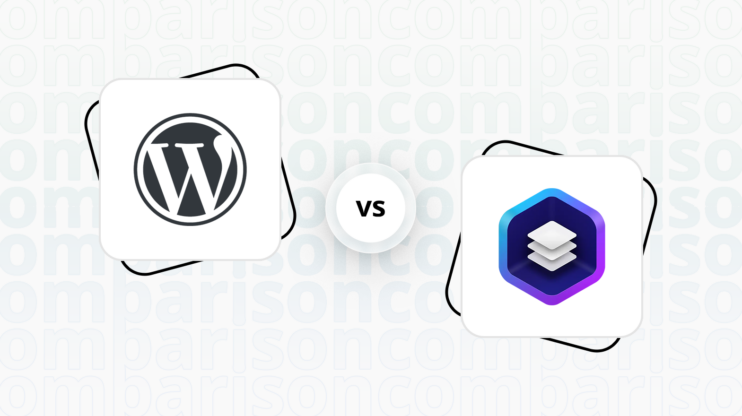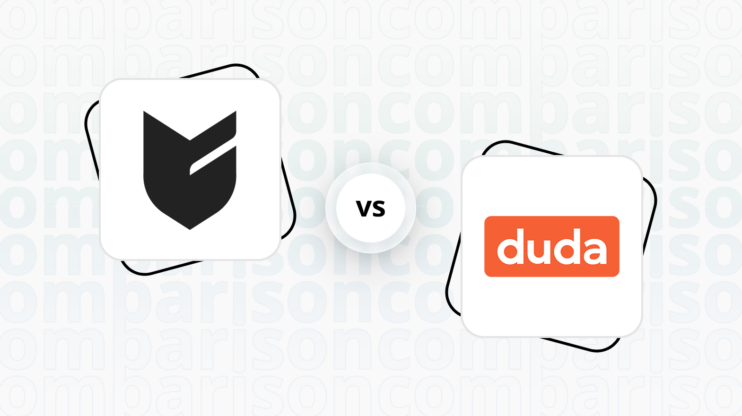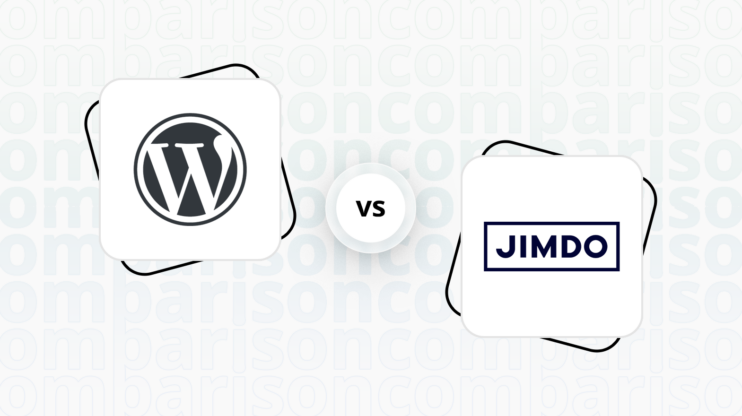Final verdict
Squarespace and Web.com cater to users looking to build websites without coding expertise, but Squarespace clearly leads in most categories.
-
Squarespace (Overall Grade: 7.9/10)
excels with its user-friendly interface, superior design options, and comprehensive ecommerce features. It’s particularly strong in areas like website editors, hosting quality, website speed optimization, and customer support. Squarespace’s platform is ideal for users seeking a blend of aesthetic appeal, functionality, and robust online store capabilities. Its higher scores across most categories reflect a more polished, versatile offering that suits a wide range of needs, from personal blogs to sophisticated ecommerce setups. -
Web.com (Overall Grade: 5.8/10)
, while offering a simpler, more straightforward platform, falls short in comparison, particularly in design flexibility, ease of use, and ecommerce capabilities. However, it distinguishes itself with unique AI capabilities, providing an AI website builder and content generation tools that may appeal to users looking for automated website design and content solutions. Despite its lower overall score, Web.com may still be a viable option for those prioritizing specific features like AI-driven design and content creation.

|

|
|
|---|---|---|
|
Design functionalities & templates |
8.0 |
6.4 |
|
Ease of use |
8.3 |
6.4 |
|
Ecommerce |
8.2 |
6.3 |
|
Website Editors |
8.3 |
6.6 |
|
Product testing options |
7.4 |
0.2 |
|
Price |
8.4 |
7.4 |
|
Hosting quality |
7.6 |
5.9 |
|
Website speed optimization |
6.7 |
5.8 |
|
Plugins and integrations |
6.8 |
6.7 |
|
Marketing features |
8.1 |
7.0 |
|
Customer support |
7.8 |
7.3 |
|
Security |
8.8 |
7.6 |
|
AI capabilities |
7.5 |
7.3 |
|
User Management |
7.4 |
5.2 |
| Overall |
7.9 |
5.8 |
Best for ecommerce
 8.2
8.2
 6.3
6.3
Verdict
: Squarespace is the superior choice for ecommerce, offering a more polished and comprehensive suite of features compared to Web.com.
-
Squarespace
: With its intuitive interface, secure payment processing, and extensive marketing tools, Squarespace stands out as a robust platform for businesses looking to create a professional online store. Its diverse range of templates and customization options further enhances its appeal for ecommerce. -
Web.com
: While it provides essential ecommerce functionalities and supports payment gateway integration, Web.com falls short in offering the same level of creative freedom and feature set as Squarespace. It’s a viable option for those with simpler needs or who prioritize ease of use over advanced features.
Best for informational & business websites
 8.4
8.4
 6.5
6.5
Verdict
: Squarespace is the superior choice for informational and business websites, offering a more polished and user-friendly experience compared to Web.com.
-
Squarespace
: With a score of 8.4, Squarespace shines for informational and business websites, thanks to its elegant templates, comprehensive design options, and user-friendly interface. It’s ideal for those seeking a professional online presence with minimal hassle. -
Web.com
: Scoring 6.5, Web.com provides essential tools for website creation but falls short in comparison to Squarespace, especially in terms of design flexibility and ease of use. It’s a viable option for those with basic needs but not for those aiming for a standout business website.
Detailed comparison
Design functionalities & templates
Design FunctionalitiesRepresents how well each platform allows for creative design and customization of websites.Score Components:
- Template Variety (30%): Range and quality of design templates.
- Customization (30%): Flexibility and options for design alterations.
- User Interface (20%): Ease and intuitiveness of the design process.
- Responsiveness (10%): Adaptability to different devices and screen sizes.
- Innovation (10%): Unique design features and tools.
 8.0
8.0
 6.4
6.4
🏆
Winner: Squarespace.
Squarespace offers more variety in templates and design, more customization flexibility, and more creative design possibilities.
Squarespace boasts an impressive variety of website templates, offering over 120 pre-designed options to choose from. These templates cater to a wide range of needs and industries, from creative portfolios and sleek online stores to professional business websites and personal blogs.


On the other hand, Web.com offers over 100 website templates designed to cater to a broad spectrum of industries and personalization needs. These templates are structured to be straightforward in customization, allowing users to easily adapt their chosen designs to suit their unique brand identity through the platform’s editor.
Get a head start on website creation with AI
Create a custom website tailored to your business needs 10X faster with 10Web AI Website Builder!
Ease of use
Ease of useReflects the platform’s overall user-friendliness.Score
Components:
- Learning curve (40%): Quickness and ease of getting started.
- Interface design (30%): Simplicity and intuitiveness of layout.
- User guidance (20%): Quality of tutorials and support.
- Flexibility (10%): Adaptability to various user skills.
 8.3
8.3
 6.4
6.4
🏆 Winner: Squarespace
. With a score of 8.3, Squarespace is known for its user-friendly interface and straightforward navigation, making it a great choice for those seeking a hassle-free website creation experience. Web.com, scoring 6.4, offers a range of templates and customization tools, but it might not be the best fit for those seeking quick, simple website setup.
Learning Resources
🏆 Winner: Squarespace
. Squarespace provides extensive learning resources, including a comprehensive Help Center, clear video tutorials, live webinars, an informative blog, and an active community forum. On the other hand, Web.com offers a range of AI-powered tools and a comprehensive knowledge base, but lacks a large community of users.
For ecommerce
EcommerceMeasures the platform’s effectiveness in supporting online business activities.Score Components:
- Ecommerce themes and templates (20%): Variety and design of templates.
- Product management (25%): Ease of managing and organizing products.
- Payment options (25%): Variety and convenience of payment methods.
- Ecommerce features (20%): Features for managing an ecommerce store.
- Integration (10%): Compatibility with external e-commerce tools and services.
 8.2
8.2
 6.3
6.3
When it comes to ecommerce, Squarespace offers a user-friendly solution that simplifies the setup of an online store with an intuitive interface and customizable templates. It handles secure payment processing, flexible shipping options, and automated tax calculations, while also providing built-in marketing tools, SEO optimization, and detailed analytics for enhanced store visibility and performance. On the other hand, Web.com offers a suite of ecommerce features aimed at simplifying the creation and management of online stores, including AI-driven design options, customizable templates, and secure payment solutions. However, it has been noted for its complex setup process and limited template variety, which might restrict creative freedom.

|

|
|
|---|---|---|
|
Ecommerce themes and templates |
7.5 |
5.5 |
|
Product page customization |
7.0 |
6.0 |
|
Payment processing and commissions |
7.8 |
6.5 |
|
POS capabilities |
6.5 |
4.0 |
|
Payment gateways |
7.5 |
7.0 |
|
Product numbers |
6.8 |
5.0 |
|
Additional ecommerce features |
7.2 |
6.0 |
Squarespace ecommerce features:
- Intuitive interface
- Secure payment processing
- Built-in marketing tools
- SEO optimization
- Website analytics
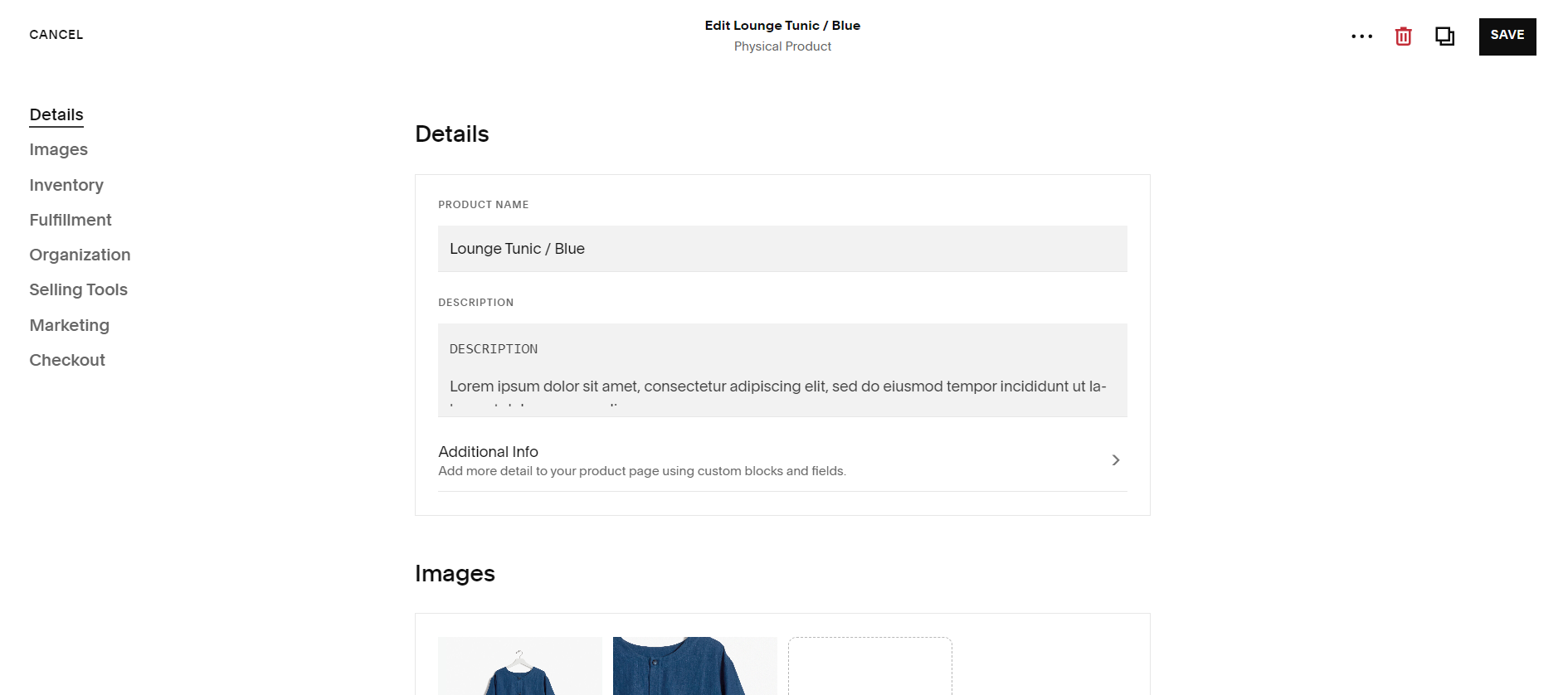
Web.com ecommerce features:
- Product listing
- Marketing Features
- Shipping options
- Payment Gateways integration
Ecommerce themes & templates
Squarespace provides a diverse selection of around 50 ecommerce templates, catering to various industries like fashion, beauty, home goods, and technology. These templates range from clean and minimalist to bold and colorful, accommodating different brand aesthetics and product types. Offering unique layout elements such as product sliders and featured collections, these templates enhance visual interest and engagement. In contrast, Web.com offers around 15 ecommerce templates designed to help businesses quickly launch and customize their online stores, emphasizing ease of use, cost-effectiveness, and professional design.
Product page customization
Squarespace offers options for layout, design, and interactive elements on product pages. Choose templates, customize colors, fonts, and content. Enhance engagement with features like customizable buttons, wishlists, comparisons, reviews, and related products. Advanced options include custom code injection and third-party app integrations. Limitations include fixed core page structure and the need for technical expertise. Free templates have fewer customization options than premium ones. On the other hand, Web.com’s website builder offers a suite of tools for e-commerce stores, including product category management for organizing inventory and improving navigation, and product listing features for adding detailed product information and images.
Payment processing
Squarespace provides flexible payment processing for online stores with integrated gateways like Stripe and PayPal. External gateways can be set up for specific needs. Transaction fees may apply depending on the plan and payment method. Security measures include PCI compliance and fraud prevention. Additional features include payment links, support for subscriptions, and the ability to accept international payments in various currencies. Web.com supports popular payment gateways like PayPal, Stripe, and all major debit and credit cards, ensuring a wide array of payment options for customers. Details on transaction commissions, particularly whether Web.com imposes additional fees on transactions processed through these gateways, were not clearly stated in the reviewed sources.
Website Editors
Website EditorsEvaluates the platforms’ website building and editing capabilities.Score Components:
- Customization tools (40%): Range and power of editing features.
- Editor usability (30%): User experience within the editor.
- Design flexibility (20%): Freedom in layout and design changes.
- Update and maintenance ease (10%): Simplicity of updating and maintaining the site.
 8.3
8.3
 6.6
6.6
🏆
Winner: Squarespace
. Squarespace, with a score of 8.3, offers a user-friendly editor that allows easy drag-and-drop website creation without coding. With visually appealing templates and customization options, it caters to beginners and pros alike. The real-time editing experience ensures instant previews. Prioritizing content, it’s mobile-responsive and offers functional features like forms, social media integration, and online stores. Squarespace seamlessly integrates with tools for extended capabilities.
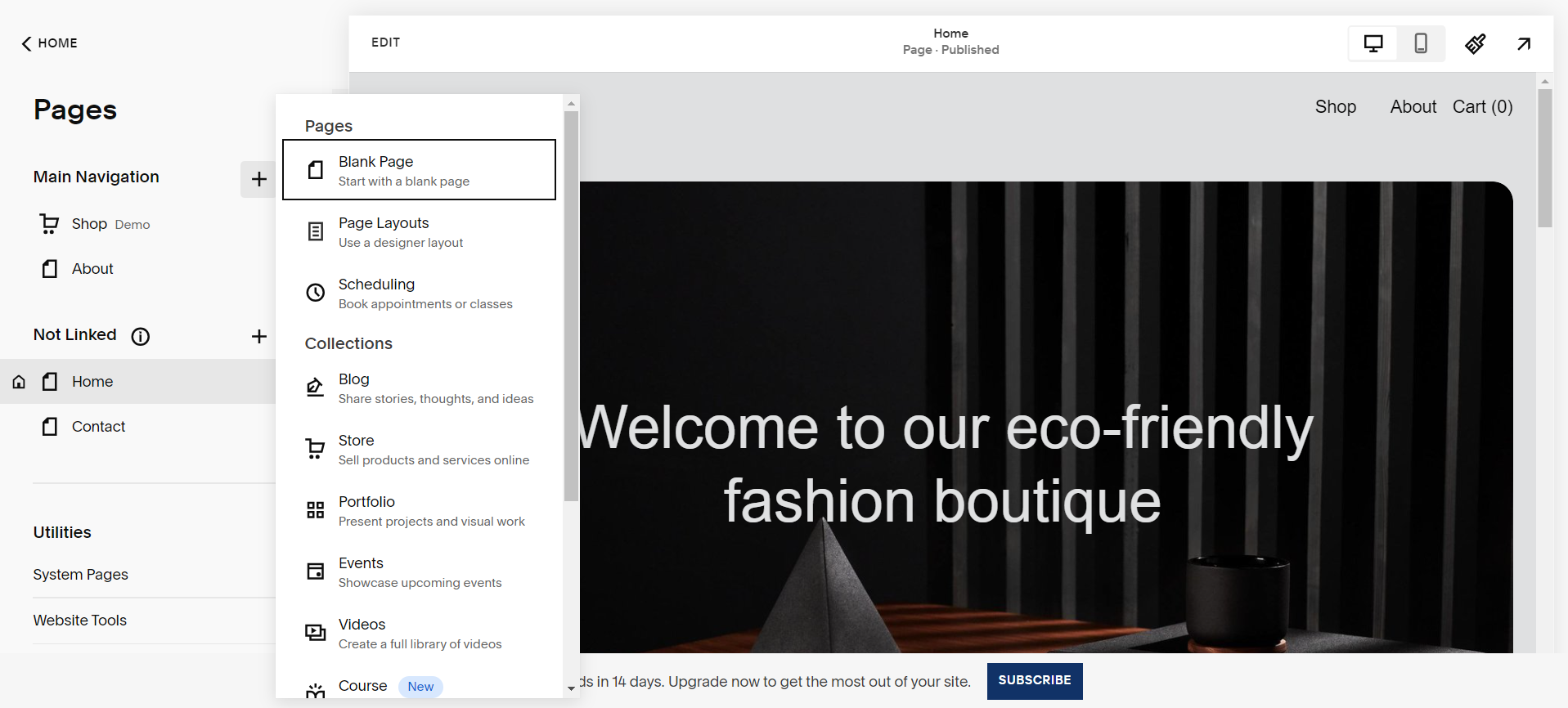
Web.com’s editor, scoring 6.6, offers a user-friendly platform with a variety of templates and a drag-and-drop interface for easy customization, albeit with some creative limitations due to its row-based layout. It supports basic e-commerce capabilities suitable for small businesses, alongside features like analytics, social media integration, and email services. However, for more advanced functionalities like promotional pop-ups, calendars, or comprehensive blogging tools, the platform may fall short unless users are willing to add custom code.
Mobile editor/app
 8.5
8.5
 0
0
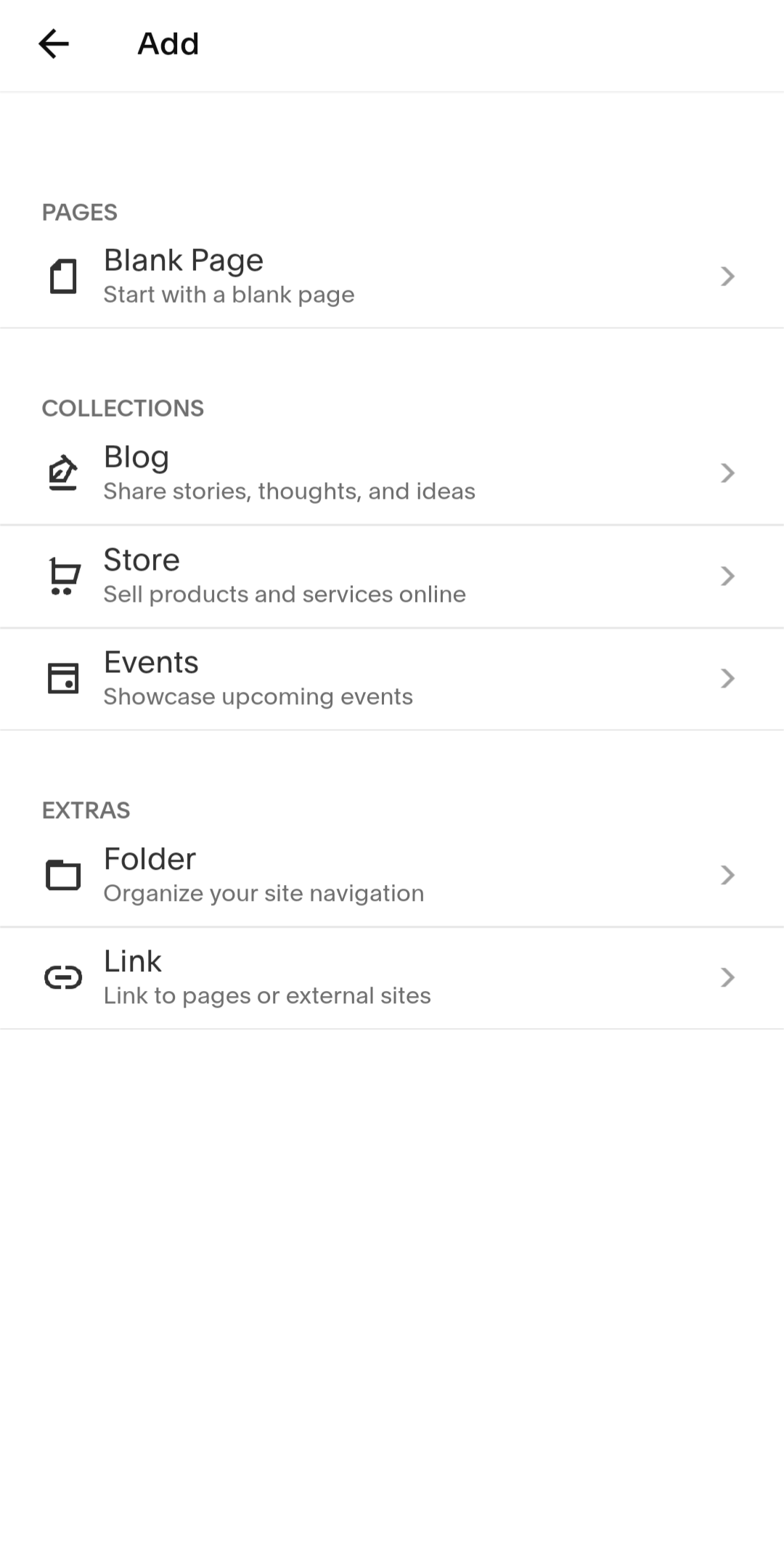
🏆
Winner: Squarespace
. Squarespace and Web.com both offer robust website building platforms, but when it comes to mobile editing capabilities, Squarespace is the clear winner. Squarespace’s mobile app allows users to manage their website, edit content, view analytics, manage their online store, and schedule social media posts. However, it’s worth noting that the app doesn’t offer the full range of functionalities available on the desktop version, so for complex tasks such as advanced design customization or creating new page layouts, you’ll need to access the desktop editor.
Web.com, on the other hand, does not have a mobile editor app, which means you can’t manage or edit your website on the go. This lack of mobile editing capabilities can be a significant drawback for users who need to make quick updates or check their website’s performance while away from their computer.
In summary, Squarespace receives a higher rating due to its mobile editing capabilities and a more comprehensive range of features, while Web.com lacks a mobile editor, which can be a significant drawback for users who need to manage their website on the go.
Product testing options
Product Testing OptionsAssesses the options for trying out platform features before commitment.Score Components:
- Trial quality (40%): Extent and usefulness of the trial or free version.
- Feature accessibility (30%): How many features are available to test.
- Trial duration (20%): Length of the trial period.
- Ease of transition (10%): Smoothness of moving from trial to paid plans.
 7.4
7.4
 0.2
0.2
Overall Result
:
Squarespace Wins
. Squarespace scores 7.4, offering a 14-day free trial and the possibility to test most premium features. Web.com, on the other hand, scores only 0.2, with no free or trial version and no possibility to test any features before purchasing a plan.

|

|
|
|---|---|---|
|
Free Plan |
No (14-day free trial) | No |
|
Trial Duration |
14 days | No trial version |
|
Testing Premium Features |
Most features, except for custom code, premium integrations and removal of Squarespace branding |
Not possible |
|
Money Back Guarantee |
Full refund within 14 days | 3-day money back guarantee |
Price
PriceLooks at the cost-effectiveness and value for money of each platform.Score Components:
- Plan value (40%): What each pricing tier offers.
- Transparency and clarity (30%): Clearness of pricing structures.
- Flexibility of plans (20%): Range of options to suit different budgets.
- Hidden costs (10%): Additional expenses not included in the plan.
 8.4
8.4
 7.4
7.4
Squarespace and Web.com offer a range of pricing plans to cater to different needs, with Web.com offering significant discounts on annual billing.

|

|
|
|---|---|---|
|
$10-$15 |
Personal ($12/month): Build a basic website with limited features for personal use. Access to basic templates, mobile-friendly design, and some social media integrations. Value for price: 6.0 |
No offering at this amount. |
|
$15-$20 |
Business ($16/month): Upgrade features with custom domain, SEO tools, marketing tools like email campaigns, and analytics. Value for price: 7.5 |
Website ($19.99/month): AI-powered Website Builder. Free domain & domain privacy for 1 year. Professional email for 3 months. SSL Certificate for 1 month. 1 hour expert design support. Social & email marketing tools. Value for price: 6.5 |
|
$20-$30 |
Commerce ($26/month): Perfect for online stores with built-in eCommerce functionality (unlimited products), secure checkout, inventory management, and marketing tools. Value for price: 8.5 |
Website + Marketing ($24.99/month): All features in the Website plan. Enhanced marketing tools. Appointment scheduling. Value for price: 7.0 |
|
$30+ |
Advanced Commerce ($40/month): Cater to high-volume stores with advanced eCommerce features like abandoned cart recovery, product subscriptions, gift cards, and real-time shipping quotes. Value for price: 9.0 |
eCommerce ($34.99/month): All features in the Website + Marketing plan. Online store with secure checkout. Sell on multiple marketplaces like Facebook, Instagram, Amazon, eBay, etc. Value for price: 8.5 |
location. As a result in rare cases the prices displayed here can differ from the ones you see on their
websites.
Hosting quality
Hosting
qualityExamines the reliability and performance of the hosting solutions.Score Components:
- Uptime (40%): Consistency and reliability of website availability.
- Speed (30%): Loading times and performance.
- Bandwidth and storage (20%): Sufficiency of resources provided.
- Data centers (10%): Quality and distribution of hosting infrastructure.
 7.6
7.6
 5.9
5.9
Winner: Squarespace
. Squarespace offers proprietary cloud-based hosting with a 99.9% uptime guarantee and data centers across North America, Europe, and Asia. Web.com provides shared hosting with unlimited storage and daily backups, but does not disclose uptime statistics or the locations of its data centers. Squarespace’s transparency and reliability give it the edge in this category.

|

|
|
|---|---|---|
|
Do they offer hosting? |
Yes, included in all paid plans |
Yes, with unlimited storage and daily backups |
|
Data Centers: |
Squarespace’s data centers are strategically scattered across North America, Europe, and Asia |
Web.com does not disclose the locations of its data centers |
|
Type of hosting: |
Proprietary cloud-based hosting |
Shared hosting |
|
Uptime: |
99.9% |
Web.com does not provide uptime statistics |
|
Uptime Guarantee: |
Yes |
No |
Website Speed Optimization
Website Speed OptimizationEvaluates optimization of website loading timesScore Components:
- PageSpeed Score (30%): Google’s score indicating performance optimization.
- Loading Time (30%): The average time until a website is fully interactive.
- Mobile Optimization (15%): Optimization effectiveness for mobile devices.
- Resource Optimization (15%): Optimizing images, scripts, and other heavy resources.
- CDN Usage (10%): Use of CDN to enhance speed across geolocations.
 6.7
6.7
 5.8
5.8
🏆 Winner: Squarespace
Both Squarespace and Web.com have strategies for website speed optimization, but Squarespace provides more detailed information and has a higher focus on Core Web Vitals improvements.

|

|
|
|---|---|---|
|
Focus |
Responsive design, image optimization |
Mobile Optimized design, Code Minification |
|
Performance Tools |
CDN, code minification, lazy loading |
Caching, Image Optimization |
|
Key Strategies |
Responsive design, image optimization, CDN, code minification, lazy loading |
Mobile Optimized design, Code Minification, Caching, Image Optimization |
|
Load Times |
0.7s to 9.1 s (Average: 2.9s) |
Varies depending on optimization and website complexity |
|
Page Speed Scores Range |
20/100 to 93/100 (Average: 62.7/100) |
Varies depending on optimization and website complexity |
|
Core Web Vitals Improvement |
Emphasis on LCP, FID, CLS improvements |
No information provided |
Squarespace’s strategy for speed optimization includes responsive design, image optimization, CDN, code minification, and lazy loading of images. It provides specific data on load times, ranging from 0.7s to 9.1s with an average of 2.9s, and PageSpeed scores, ranging from 20/100 to 93/100 with an average of 62.7/100. Squarespace also emphasizes improvements on Core Web Vitals, including LCP, FID, and CLS.
Web.com’s strategy for speed optimization includes mobile optimized design, code minification, caching, and image optimization. However, it does not provide specific data on load times and PageSpeed scores, and does not provide any information on their Core Web Vitals improvements. Therefore, Squarespace is the winner in this comparison.
Get a head start on website creation with AI
Create a custom website tailored to your business needs 10X faster with 10Web AI Website Builder!
Plugins and integrations
Plugins and integrationsMeasures the range and effectiveness of additional plugins and integrations.Score Components:
- Variety of options (40%): Range of available add-ons.
- Integration smoothness (30%): Ease of integrating plugins into the site.
- Quality of plugins (20%): Functionality and reliability of the options.
- Custom integration capabilities (10%): Support for custom or third-party integrations.
 6.8
6.8
 6.7
6.7
🏆 Winner: Squarespace.
With a score of 6.8, Squarespace edges out Web.com (6.7) in the plugins and integrations category. While Squarespace doesn’t have an official app store, it supports a wide range of integrations and extensions through custom code injection and third-party tools. Web.com, on the other hand, offers a suite of plugins and integrations, but more advanced features might require an upgrade or additional fees. Both platforms offer a variety of plugins to extend their functionalities, but Squarespace’s seamless integration with partner tools gives it a slight advantage.
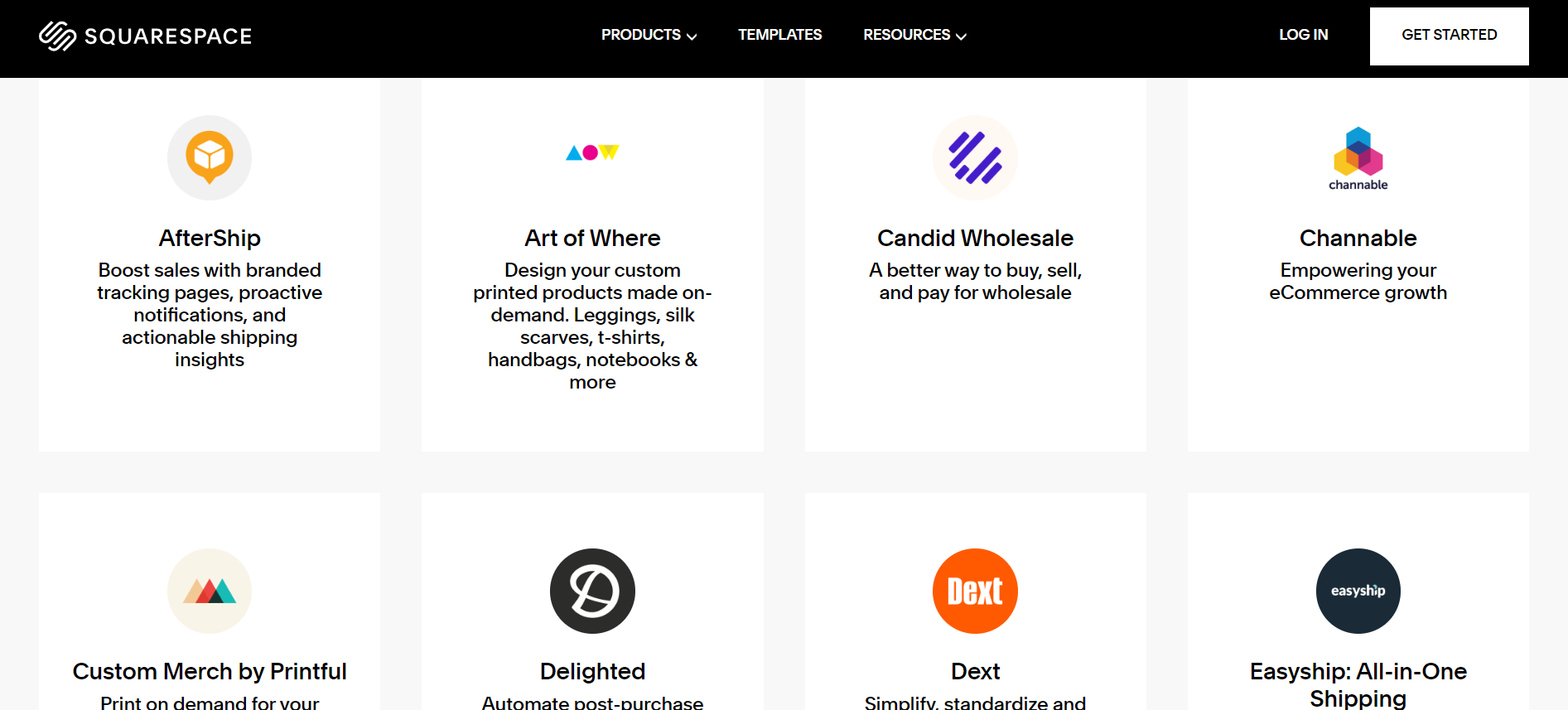
Marketing Features
Design FunctionalitiesRepresents how well each platform allows for creative design and customization of websites.Score Components:
- Template Variety (30%): Range and quality of design templates.
- Customization (30%): Flexibility and options for design alterations.
- User Interface (20%): Ease and intuitiveness of the design process.
- Responsiveness (10%): Adaptability to different devices and screen sizes.
- Innovation (10%): Unique design features and tools.
 8.1
8.1
 7.0
7.0
🏆
Overall Winner: Squarespace
. Squarespace edges out Web.com with a higher score and a more comprehensive set of marketing tools, especially in the areas of SEO, email marketing, and analytics. Web.com, however, offers a decent set of features and is particularly strong in social media integration.

|

|
|
|---|---|---|
|
SEO Tools |
|
|
|
Email Marketing |
|
|
|
Blogging |
|
|
|
Social Media Integration |
Direct linking and selling on social platforms, plus feed displays on-site |
Yes |
|
Analytics and Reporting |
Detailed insights into website performance and visitor behavior |
Basic website analytics |
|
Ads and Promotions |
Integration with Google Ads and tools for managing sophisticated ad campaigns |
Yes |
Customer Support
Customer supportEvaluates the quality and availability of support options.Score Components:
- Response time (40%): Speed of support responses.
- Support quality (30%): Effectiveness and helpfulness of the support.
- Availability (20%): Range of support channels (phone, chat, email).
- Resource richness (10%): Quality of self-help and educational materials.
 7.8
7.8
 7.3
7.3
🏆 Winner: Squarespace
. Squarespace edges out Web.com in this category with a customer support score of 7.8 compared to Web.com’s 7.3. Squarespace offers a variety of customer support options, including live chat, email, a community forum, and a comprehensive help center. Live chat and phone support are available on weekdays, while email support is available 24/7. The community forum and help center offer 24/7 access, and language support is provided in several languages across different support channels.
Web.com also offers comprehensive customer support, including email, live chat, and phone support, available 24/7. However, it does not provide any specific support for enterprises, unlike Squarespace, which offers a dedicated Squarespace Enterprise plan with tailored features and assistance.
Security
SecurityLooks at the platforms’ security measures and data protection.Score Components:
- Data protection (40%): Safeguards for user and customer data.
- SSL and encryption (30%): Implementation of secure connections.
- Compliance (20%): Adherence to industry security standards.
- Regular updates (10%): Frequency of security updates and patches.
 8.8
8.8
 7.6
7.6
🏆
Winner: Squarespace
. Squarespace’s security measures are comprehensive, including secure server storage, encryption, strict access controls, compliance with regulations such as GDPR and CCPA, transparent privacy policies, and additional security measures like vulnerability scanning and malware detection. These measures collectively safeguard your website content and customer information.
Web.com also offers a range of security services, including website staging environments, email solutions, and partnership with SiteLock Security for cloud-based security services. However, compared to Squarespace, its security features seem less comprehensive.
AI Capabilities
AI capabilitiesMeasures the effectiveness of AI-driven features and tools.Score Components:
- Automation efficiency (40%): Impact of AI on streamlining processes.
- Personalization (30%): AI-driven customization for users or customers.
- AI-Assisted design (20%): Role of AI in website design and functionality.
- Data analysis (10%): Use of AI in interpreting user data and analytics.
 7.5
7.5
 7.3
7.3

|

|
|
|---|---|---|
|
AI Website Builder |
|
Web.com’s AI builder generates a website based on user preferences |
|
AI Ecommerce Features |
AI-powered copywriting, SEO optimization, and personalized email marketing |
Personalized product recommendations, automated inventory management, and customer service chatbots |
|
AI Content Generation |
Generates diverse content including product descriptions, website copy, blog posts, and email marketing content |
AI Writer tool for content creation in twelve languages |
|
Additional AI Features |
SEO optimization suggestions, related product recommendations, and inventory management insights |
AI Domain Generator and AI Logo Builder for website design and branding |
🏆 Winner: Web.com
. Web.com’s AI capabilities, particularly its AI website builder and AI Writer tool, are highly user-friendly and innovative. It excels in offering a seamless and intuitive way to build websites quickly and generate diverse content.

Squarespace, with a score of 7.5, utilizes AI mainly to enhance the ecommerce experience and content creation. Its AI features focus on AI-powered copywriting, SEO optimization, and personalized email marketing. While Squarespace’s AI is powerful, it lacks a fully automated AI website builder.
User Management
User ManagementAssesses the platforms’ capabilities in managing user roles, permissions, and accessibility.Score Components:
- Role Customization (40%): Flexibility in creating and defining user roles and
permissions. - Ease of Management (30%): User interface and tools for managing users.
- Access Control (20%): Effectiveness of access control measures for different user
levels. - Scalability (10%): Ability to manage a growing number of users efficiently.
 7.4
7.4
 5.2
5.2
🏆 Winner: Squarespace
. Squarespace and Web.com both offer user management features, but Squarespace provides a more comprehensive and flexible system.
- Squarespace allows varying numbers of users with editing access depending on the plan. The Personal Plan allows one owner, Business and Commerce Plans permit 2 collaborators with different access levels, and the Enterprise Plan offers unlimited users, each with customizable access privileges.
- Web.com allows multiple user accounts, but does not specify the number of accounts supported.
Squarespace User Roles and Access Levels:
| Role | Description | Access Highlights |
|---|---|---|
| Owner | The primary user who created the website and has full access. | Full site access, including billing, site settings, content editing, and member management. |
| Administrator | Users granted nearly full access to manage the site alongside the Owner. | Access to most areas except for some owner-specific settings like ownership transfer. |
| Content Editor | Users focused on adding and managing site content without full site access. | Can add, edit, and delete content on pages, blog posts, and manage comments. |
| Billing | Users who manage the subscription and billing details. | Access to billing information and the ability to update subscription details. |
| Store Manager | Users who manage the ecommerce aspects of the site. | Can manage inventory, fulfill orders, manage customers, and view sales analytics. |
| Custom | A role defined by the site owner or administrators with specific access. | Customizable access as defined by the Owner or Administrators, can vary widely between sites. |
Web.com User Roles and Access Levels:
| Role | Description | Access Highlights |
|---|---|---|
| Primary | The main account holder or primary user. | Edit primary user info, purchase products, manage and renew products and services. |
| Admin | Users with administrative privileges besides the primary. | Edit payment information, add/edit/delete user roles, manage and renew products and services, edit WHOIS Admin and Tech user info. |
| Tech | Users with technical responsibilities. | Manage and renew products and services, edit WHOIS Admin and Tech user info. |
Additional Features

|

|
|
|---|---|---|
|
SSL Certificate |
|
|
|
Custom Domain |
|
|
|
Free Custom Domain Included |
|
|
|
International Domains |
|
|
|
Mobile Responsive |
|
|
|
Page Speed |
|
|
|
Website Builder Mobile App |
|
|
|
Convert a Website To An App |
|
|
|
Website Analytics |
|
|
|
Multilingual Sites |
|
|
|
Multiple Users |
|
|
User Feedback
Squarespace is well-liked for its easy-to-use interface and versatile tools, making it ideal for those who aren’t tech-savvy. It offers various features like website creation, SEO, online selling, and more, catering to different users. Customers appreciate its good customer support and visually appealing templates, creating a professional online presence. However, some users find issues with domain transfer/setup, limited customization options, and consider the pricing slightly higher. There are also occasional concerns about customer service and technical limitations like template rigidity and missing features.
Unfortunately, there is no user feedback summary available for Web.com.
The making of this blog
We followed a clear, step-by-step process to write and research this article.
FAQ
Which platform is better for ecommerce, Squarespace or Web.com?
Can I create a professional business website with Squarespace or Web.com?
How do Squarespace and Web.com compare in terms of ease of use?
Which platform offers better customer support, Squarespace or Web.com?
Are Squarespace and Web.com good options for beginners without coding expertise?
Which platform has better website speed optimization, Squarespace or Web.com?
Can I manage multiple users on Squarespace and Web.com?
Do Squarespace and Web.com offer AI capabilities?
Which platform is more affordable, Squarespace or Web.com?
How do Squarespace and Web.com compare in terms of security features?










